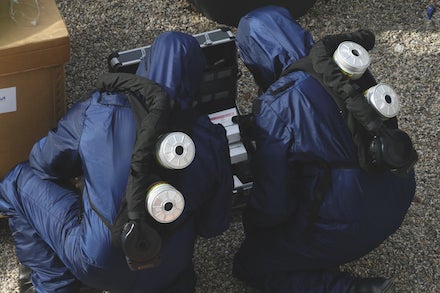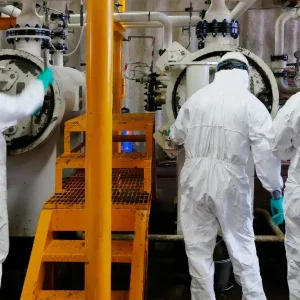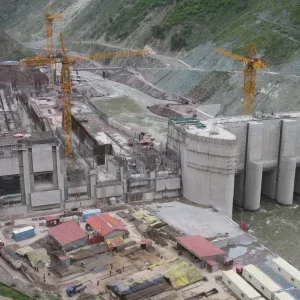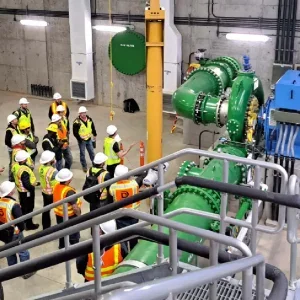
The global economy is built on the progress of high-performance industries like construction, mining automotive, energy, and more. In fact, nearly 80% of the workforce employed in these industrial settings. However, workplace safety is a major concern in these industries, which often have risky and hazardous working environments.
From injuries due to sharp objects or frayed wires to exposure threats like flammable gases and corrosive materials, industrial workers are vulnerable to a plethora of dangerous situations that can result in severe, and sometimes fatal accidents. According to the International Labor Organization (ILO), worldwide over 2.3 million workers experience accidents like disease exposure or injury in their working environments.
Given these alarming statistics, improving safety is one of the primary goals for all industrial workplaces, not just for the health of the employees but also for a more productive working atmosphere. Safety and productivity go hand in hand; a concept that has been corroborated by a study published in the Occupational Health Science journal, which suggests that employee health and safety are key elements in helping an organisation achieve its efficiency and productivity targets.
In recognition of this, organisations worldwide have started to implement targeted occupational safety measures, designed to safeguard their employees when they are working. While preventative measures take a more prominent role, industrial protective clothing, even as the last line of defense, is equally important for employee safety.
Regulations by authorities like OSHA (Occupational Safety and Health Administration) and evolving industry standards and best-practice methods outlined by entities like ANSI and NFPA are also contributing to the growth of the industrial protective clothing market, which is expected to cross $22.5bn by 2026, based on recent estimates from Global Market Insights Inc.
Other trends are also accelerating development within the protective clothing market. For example, to accommodate rising electricity demand while curbing GHG emissions, the energy sector is turning towards low-carbon technologies like nuclear power. Estimates from the IAEA, for instance, suggest that the nuclear-generating capacity could rise two-fold to almost 792 GW by 2050.
This growth of the nuclear industry and a subsequent expansion in the application scope of nuclear and radiation technologies have also resulted in higher risks, especially to employees who may be exposed to such conditions in their workplace.

The risk of exposure to radioactive materials is omnipresent in nuclear work environments, which has prompted employers in this sector to undertake certain concrete steps. These steps, ranging from monitoring to countermeasures such as disposable protective apparel, are contributing to industrial protective clothing industry growth, especially within the radiation protection segment. Radiation protection clothing is an important part of the ILO’s action plan for employee protection against disease, injury, or sickness caused by their working conditions.
Various nations, like Canada, are making strides in improving testing standards and techniques to ensure optimisation of personal protective wear in high-risk working conditions like nuclear power plants. For example, in August 2021, Ontario-based Kinectrics Inc. invested more than C$841,000 (US$656,000) to expand and implement better testing standards for industrial PPE, with the provision of over C$252,000 (US$197,000) worth of support from the Ontario Together Fund. Focused on backing domestic production and innovation in industrial protective equipment, this investment is helping the company extend its testing resources to various sectors like nuclear utilities.
Most anti-nuclear industrial protective garments feature materials that are impermeable to particulates, obstruct skin contact, or ingestion of materials that could potentially be radioactive. This is usually achieved through coating materials using laminates or specialized co-polymers that possess broad-spectrum chemical resistance properties.
Companies such as Ouvry are making targeted efforts in this regard with the introduction of their POLYNUC line of filtering protective clothing. Designed for waste management and maintenance applications on nuclear sites, the material prevents penetration of particulates and liquids through the outer fabric, as well as aerosol and vapour prevention through the filer media. Using this complex material, the clothing line was built for workers facing exposure to asbestos and chemical-type particulates from work environments in nuclear facilities.
Increasing industrial expenditure on lightweight and comfortable protective clothing for sectors like the nuclear industry has enabled manufacturers to introduce technological innovations necessary for high-performance clothing. Several manufacturers are also engaged in extensive R&D activities to further enhance product innovation.
The projected growth in nuclear capacity is a trend that has helped shed light on the importance of industry-specific safety apparel as well as highlighting the significance of radiation protection clothing to further improve employee safety.
This article first appeared in Nuclear Engineering International magazine.






